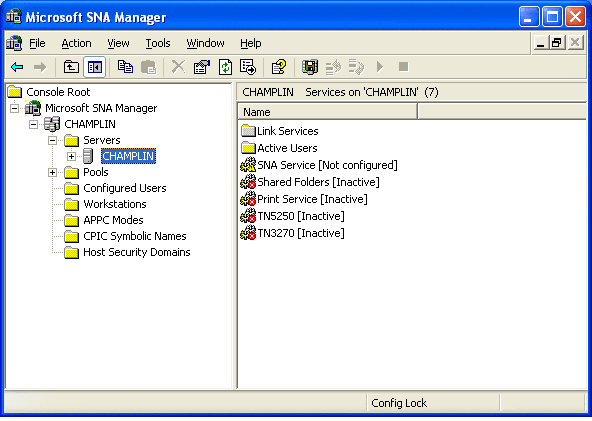Definition of Microsoft SNA Server in Network Encyclopedia.
What is Microsoft SNA Server?
SNA Server is a tool for LAN-host integration (integration of SNA and non-SNA networks, personal computers and host computers, and Internet/intranet technologies with IBM AS/400 and mainframe systems).

Version 4 of Microsoft SNA Server is a comprehensive gateway and application integration platform that enables organizations to embrace Internet, intranet, and client/server technologies while preserving their investment in AS/400 and mainframe systems.
SNA Server offers the following advantages:
- You save money by preserving existing AS/400 and mainframe investments.
- It allows you to integrate Internet, intranet, and client/server solutions with host-based systems.
- It provides a platform for developing powerful client/server applications, including next-generation Web transaction and e-commerce solutions, that use host resources.
How it works
In its earliest versions, SNA Server provided gateway functions for integrating TCP/IP, Internetwork Packet Exchange (IPX), NetBEUI, and Banyan VINES networks with SNA host-based environments. This provided connectivity between LAN-based client/server systems such as Microsoft BackOffice Server and host-based systems such as IBM AS/400 and mainframe computers.
In version 3 of SNA Server, this gateway functionality was extended to include facilities integration with Microsoft Windows NT applications and security. Version 4 further extends the gateway functions while enhancing SNA Server’s position as a platform for application integration. SNA Server 4 is the first SNA gateway product that combines the features of a traditional SNA gateway with middleware application capabilities.
When a LAN client attempts to communicate with an SNA network, it establishes an initial connection with an SNA server, which provides the client with the names of all SNA servers in the domain. The client then tries SNA servers randomly from these names until it locates the requested logical unit (LU). An LU is a configurable unit that specifies the type of session to be established with the mainframe or AS/400 host. The SnaBase service lets SNA servers and clients keep track of the names of SNA servers in the domain. The SNA Server is connected to the AS/400 or mainframe using a dedicated 802.2, X.25, or Synchronous Data Link Control (SDLC) link using the appropriate hardware and cabling.
SNA Server 4 includes the following new features:
- Microsoft Management Console (MMC) support, which integrates management of SNA Server with other Windows NT tools through several SNA Server snap-ins and makes SNA Server ready for the Windows 2000 family of operating systems
- Support for up to 30,000 simultaneous sessions per server
- Telnet support for 3270 and 5250 applets, which gives administrators more choice for terminal emulation when accessing AS/400 or mainframe systems
- Web Setup for Windows 95 and Windows 98 clients, a simple way to provide host connectivity through Web browsers on corporate intranets by having users download a preconfigured SNA client using a standard Web browser such as Microsoft Internet Explorer
- COM Transaction Integrator for CICS and IMS, which provides drag-and-drop simplicity for development of three-tier client/server or Web-to-host applications by integrating CICS or IMS mainframe environments with Microsoft Transaction Server (MTS)
- Component Builder, a tool for importing COBOL code from mainframe environments and automatically generating components for MTS
- SNA Session-Level Compression for improved data throughput
- VSAM File Transfer command-line utility for uploading or downloading files between mainframe VSAM data sets and Windows NT
- OLE DB Provider for AS/400 and VSAM
COM Transaction Integrator (COMTI)
A component of Microsoft SNA Server version 4 that provides client applications with access to two popular mainframe transaction processing (TP) environments, Customer Information Control System (CICS) and Information Management System (IMS).
How COM Transaction Integrator works
COM Transaction Integrator (COMTI) works in conjunction with Microsoft Transaction Server (MTS), making CICS and IMS programs appear as MTS components that can be used with other MTS components to build distributed applications.
COMTI includes both a Microsoft Windows NT Server run-time environment and a development tool called Component Builder, which can import mainframe COBOL code and automatically generate an object compatible with MTS.
This lets developers program in the visual, object-oriented environments they are accustomed to, allowing them access to host transactions without needing to learn the intricacies of SNA.